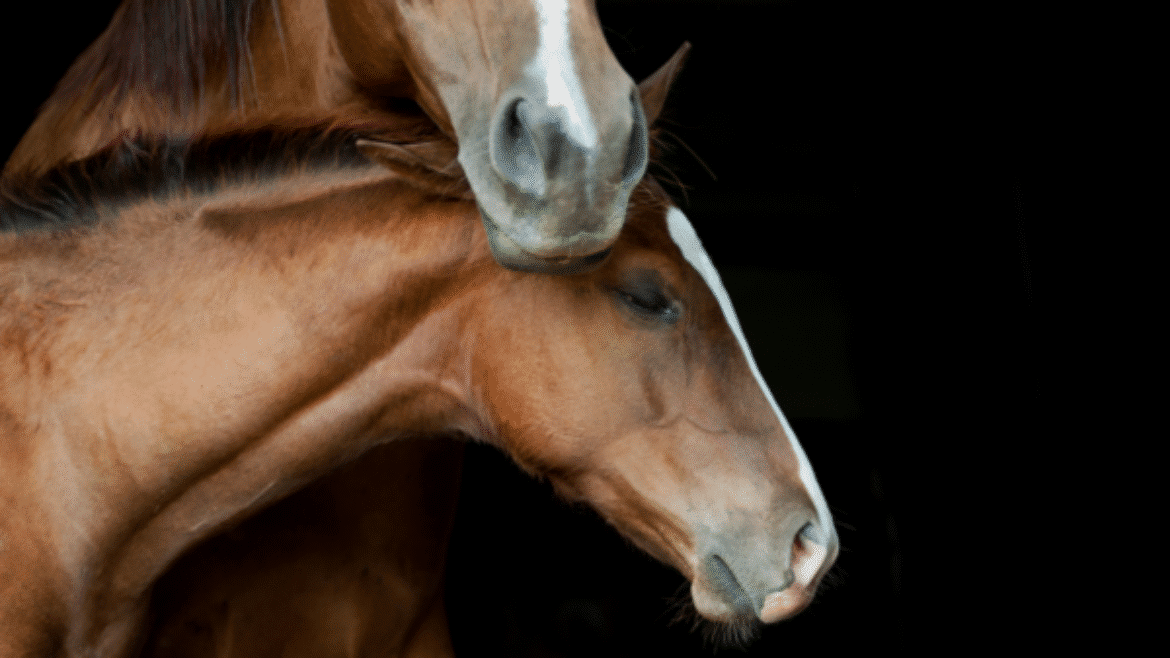Assessment of the Neonatal Foal in the Field (2023)
Dr. Zoe Walker BVSc
Assessment of foals in the field soon after birth allows for the swift identification of abnormalities and early initiation of management if required. Veterinary examination of the equine neonate within the first 24 hours of life is considered best practice, and it is recommended this examination is performed earlier in neonates with perinatal risk factors, premature gestation length (<320 days), early placental separation, dystocia during delivery or those that fail to meet predictable milestones.
History
It is vital to gather a thorough history. Questions include:
- What was the gestation length?
- Was the delivery attended? If so, was it a normal foaling or did the mare require assistance? Was it a red bag delivery? Did the foal require resuscitation? Was there any evidence of meconium staining on the foal?
- Has the foal sat in sternal/stood/suckled/urinated/passed meconium? If so, how soon after birth?
- Has the mare had any previous foals? If so, have any of them had a history of illness? Does the mare have a history of abortion?
- Have there been any abnormalities or veterinary interventions during pregnancy? Has the mare been on any treatment? Did the mare run milk before foaling?
- Has the foal been weighed? If so, what was the weight?
- Has the mare passed the foetal membranes? Were they intact? Can they be brought for examination? What did they weigh?
Normal foals meet predictable milestones to perform certain activities. Foals that fail to meet these timings should be assessed by a veterinarian as soon as possible. These timings are outlined below.
| Table 1 – Milestones for the equine neonate | ||||||
| Sitting in Sternal (mins) | Suckle Reflex (mins) | Standing Unassisted (hrs) | Suckling (hrs) | Passed Meconium (hrs) | Urination (hrs) | |
| Normal | 5 | 5-10 | <1 | <2 | <3 | 6-10 |
| Concerning | 5-10 | 10-15 | 1-2 | 3-4 | 3-6 | 10-12 |
| Abnormal | >10 | >15 | >2 | >4 | >6 | >12 |
Distance Examination of the Foal
Initially examine the foal from a distance, before handling induced stress occurs. Assess respiratory rate and effort, and look for evidence of joint laxity or contracture, angular limb deformities, spinal deformity, lameness, post-foaling paresis or ataxia.
Assess the body condition score of the foal, as a poor body condition score is suggestive of placental insufficiency or prematurity/dysmaturity. Prematurity is a foal born at <320 days of gestation. Dysmaturity is a foal born after >320 days of gestation, with the clinical signs associated with a lack of readiness for birth outlined in Table 2. Ossification studies of the carpus and tarsus should be performed in premature/dysmature foals.
| TABLE 2 – INDICATORS OF PREMATURITY AND DYSMATURITY | |
| Short, soft haircoat Drooped/curly ears Lax lips | Domed forehead Low birthweight/poor BCS Distal limb laxity |
The foal’s interactions with both their dam and environment provide important information, as abnormal behaviour is an early indicator of sepsis or neurological dysfunction such as neonatal maladjustment syndrome. Foals should be actively trying to stay with their dam, able to find the udder and should not be attempting to suckle walls or other objects.
Pay careful attention to the duration and frequency of nursing, the presence of any milk at the nostrils post-nursing, any milk staining on the forehead or muzzle, and the behaviour of the mare during nursing. Normal foals nurse for approximately 90 seconds at a time, 7-10 times per hour. If the foal is spending long periods of time at the udder, the mare may not be letting down enough milk. If the mare’s udder is large or she is streaming milk, the foal may not be drinking enough. Milk at the foals’ nostrils is most commonly due to pharyngeal or laryngeal weakness, but can also be caused by a cleft palate, sub-epiglottic cyst or other less common causes. Whilst the foal is nursing, auscultate the trachea and listen for tinkling sounds associated with the aspiration of milk.
Physical Examination of the Foal
| Table 3 – Vital signs of the equine neonate over the first 24 hours of life | |||
| Age | |||
| <10 min | 2-4hr | 24hr | |
| Heart Rate | 40-60bpm | 100-150bpm | 80-120bpm |
| Respiratory Rate | 40-60bpm/gasping | 20-40bpm | 20-40bpm |
| Rectal temperature | 37-39 degrees Celsius | ||
Assess the symmetry of the head and spine whilst standing in front of the foal. Examine the eyes. Foals should have a pupillary light reflex from birth; however, it is slower than in adults. They do not develop a menace response until 1-2 weeks of age. Entropion occurs commonly in dehydrated foals or those with poor body conditions and can cause significant corneal ulceration without marked blepharospasm or increased epiphora. Subconjunctival and retinal haemorrhages are suggestive of a difficult birth. Use an ophthalmoscope to look for congenital cataracts. Episcleral injection, hyphaema, hypopyon or fibrin in the anterior chamber can be signs of systemic sepsis and may be present from birth. Ears should be erect. Dermal haemorrhages inside the ears can be an indication of systemic sepsis or clotting disorders. Mucous membranes should be pink, and moist and have a capillary refill time of 1-2 seconds. Use a gloved hand to palpate for a cleft palate and assess the suckle reflex. Assess the bite for maxillary prognathism (parrot mouth) or mandibular prognathism (monkey mouth).
Auscultate the heart on both sides of the chest, assessing rate, rhythm, and the presence of any murmurs. Cardiac arrhythmias may occur in foals immediately post-partum but generally disappear by 15 minutes of age. More severe arrhythmias may be indicative of hypoxia. Persistent arrhythmias should be investigated via an electrocardiogram. The ductus arteriosus may take 3-4 days to close in a normal foal, and a continuous machinery murmur with a point of maximal intensity over the left heart base may be audible until this time, with the systolic component remaining audible the longest prior to closure. A low-grade left-sided systolic physiological murmur may be heard in foals up to three months of age. High-intensity murmurs in foals over a week of age, or any murmurs in foals with concurrent signs of cardiovascular compromise, should be investigated further.
Examine the coat and nasal passages for meconium staining. Carefully palpate and if indicated ultrasound the ribs to assess for fractures. Auscultate the lung fields. Crackles may be auscultated soon after birth or in the dependant lung when the foal has been laying in lateral, however should not be present after the foal has been standing for 5 minutes. Adventitious respiratory sounds are poorly correlated with the severity of bronchopneumonia in foals, therefore careful assessment of respiratory rate and dyspnoea are vital.
Auscultate the GIT, assess the degree of abdominal distension, and watch for straining. Palpate the umbilicus for thickening or herniation and examine the umbilical stump for purulent or malodorous discharge or dripping urine. The umbilicus can be examined via ultrasonography if abnormalities are suspected. The scrotal and inguinal regions should also be palpated for hernias. A digital rectal exam can be performed on foals that are suspected to have a meconium impaction. Take the rectal temperature.
Palpate all peripheral joints and physes for heat, effusion, and pain. Assess the temperature of the distal extremities. Examine the coronary bands for hyperaemia.
If urination is seen, the level of straining and the ability to produce a consistent stream should be assessed. If it is possible for urine to be caught, a urine-specific gravity (USG) can be performed to assess the hydration status of the foal. The USG of a foal should be 1.001-1.008.
Placental Examination
Weigh the placenta and compare this weight to the body weight of the foal. A normal thoroughbred placenta should be <11% of the body weight of the foal. Lay the placenta out in an F shape and examine for evidence of placentitis or other abnormalities. Carefully check any torn areas to ensure the entire placenta has passed.
Laboratory Testing
IgG levels in peripheral blood should be measured to assess the success of passive transfer of immunoglobulins. Performing this test in foals between 12 and 18 hours of age allows time for more colostrum to be administered if required. After 24 hours of age, plasma is required to increase immunoglobulin levels.
| Table 4 – Interpretation of IgG Results | ||
| >8g/L | 4-8g/L | <4g/L |
| Pass | Partial failure | Total failure |
If examining the foal soon after birth, the colostrum quality of the mare should be assessed. This can be done using a BRIX refractometer. For a 50kg foal, 1-1.5L of good quality colostrum in the first 6 hours post-birth should be adequate to achieve suitable IgG levels, however, IgG in peripheral blood should still be measured.
| table 5 – Interpretation of Colostrum Specific Gravity in the mare | |||
| BRIX 0-15% | BRIX 15-20% | BRIX 20-30% | BRIX >30% |
| Poor Quality | Borderline quality | Adequate quality | Very good quality |
Venous blood sampling may be performed on foals with clinical signs of systemic disease, or those at higher risk of sepsis. Results must be interpreted using neonatal reference ranges.
References
Austin, S M. “Assessment of the equine neonate in ambulatory practice.” Equine Veterinary Education (2013): 585-589.
Axon, J. “The Normal Newborn Foal.” Axon, J. The Foal. NZ Equine Research Foundation, 2018. 19-24.
Carr, E A. “Field triage of the neonatal foal.” Veterinary Clinics of North America: Equine Practice (2014): 283-300.
Latimer, C A and M Wyman. “Neonatal ophthalmology.” Veterinary Clinics of North America: Equine Practice (1985): 235-260.
Lester, G D and J E Axon. “Assessment of the Newborn Foal.” Smith, B P, D C Van Metre and N Pusterla. Large Animal Internal Medicine. Elsevier, 2019. 247-261.
Madigan, J E and K G Magdesian. “Physical exam of the equine neonate.” Madigan, J E. Manual of Equine Neonatal Medicine, Fourth Edition. 2014.
Marr, C M. “The equine neonatal cardiovascular system in health and disease.” Veterinary Clinics of North America: Equine Practice (2015): 545-565.




